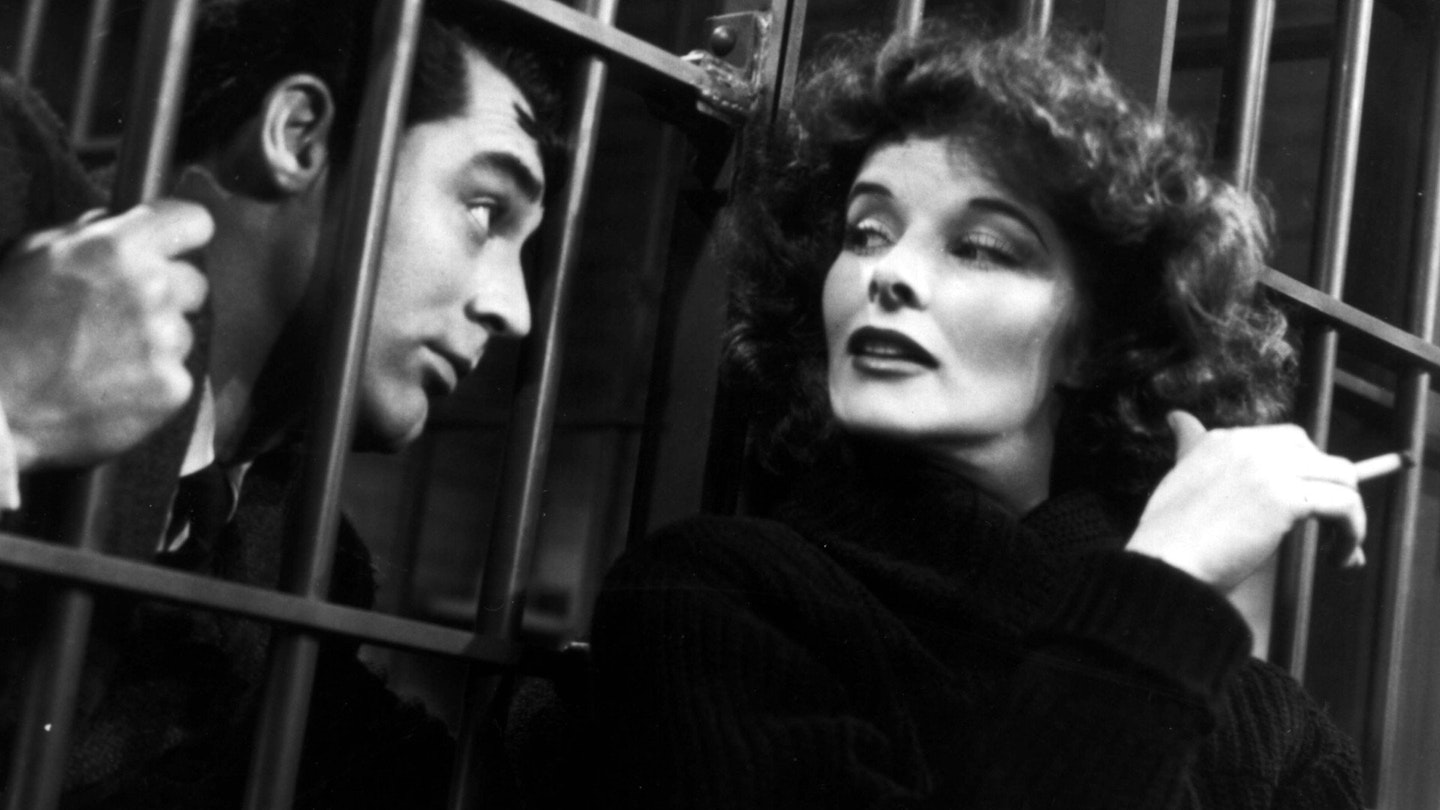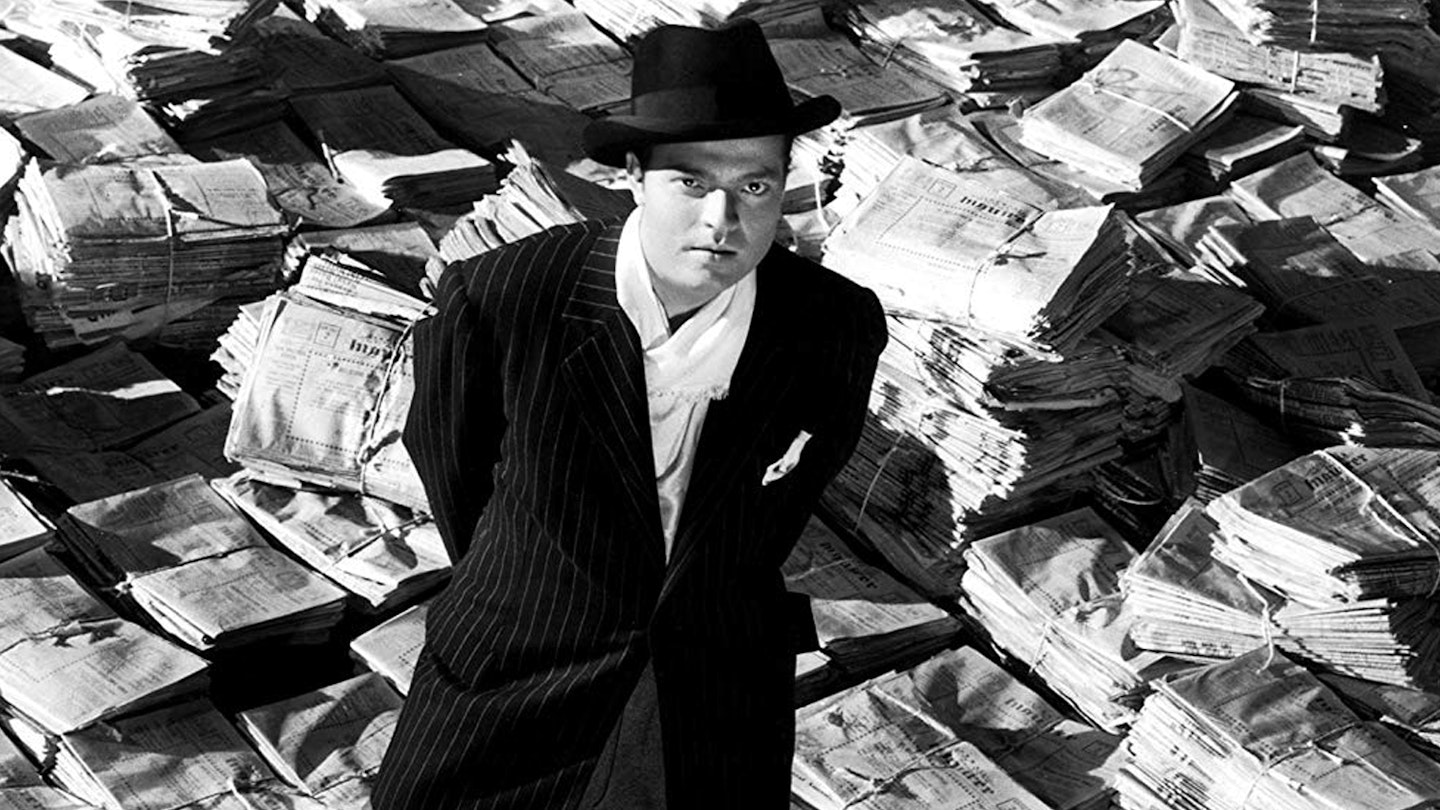Screwball comedy is defined by the eccentric characters, unconventional situations, slapstick, mishaps, sexual chemistry and snappy repartee of this landmark jape. Staples of the genre an absent-minded professor, a madcap heiress, a contrary animal (or three in this case), a large sum of money being sought, pratfalls, cocktails, false identity, a pursuit, a car crash, an unwanted fiancee, and absurd confusion are all present in mint condition in Howard Hawks' breakneck-paced, maniacally funny picture; written by one of the top screenwriters of the 30s, Dudley Nichols (an Oscar winner for the John Ford drama The Informer (1935).
The earnest, easily muddled palaeontologist in need of some fun, Dr. David Huxley (Grant) is awaiting the last bone to complete the brontosaurus he has laboured four years to reconstruct. It is to arrive on the morrow, his wedding day. Fiancee and assistant Alice Swallow (Virginia Walker), a prim bluestocking scold, sends him off to play golf with the lawyer of a potential benefactor, to schmooze for a million dollar grant to continue his project at the natural history museum. But Huxley's efforts on the golf course become a shambles when he encounters blithe and playful, "conceited, spoiled little scatterbrain" Susan Vance (Hepburn). And that's just the first five minutes. Give her 24 hours and disaster instigator Susan is going to turn David's life upside down.
Baby is the tame leopard Susan's brother has shipped from his hunting expedition in Brazil (just the sort of thing the idle rich do in 30s films). The only information that comes with him is that Baby likes dogs (whether as food or for companionship poses a later relevant question) and music, particularly I Can't Give You Anything But Love. He also likes mauling the hapless professor Huxley, as does Susan, who is determined to have him and keep him near when she discovers how handsome he is without his academic specs on.
Thus he is shanghaied to convey Baby to Susan's aunt's farm in Connecticut where after the obligatory collision with a poultry truck, car theft and the swiping of David's clothes she is revealed as the wealthy philanthropist. Meanwhile, her fiendish fox terrier George steals and buries the brontosaurus clavicle (somewhere in a 26-acre garden), Susan frees a man-killing leopard she's mistaken for the missing Baby and most of the ensemble are jailed in noisy pandemonium.
Countless films have imitated Bringing Up Baby, most famously Peter Bogdanovich's homage What's Up, Doc? (1972), but it is
futile to look for its equal. Hawks, a master of any genre, was one of the innovators of deliriously frantic, overlapping dialogue; only His Girl Friday (1940 also Hawks) can claim faster talking. Hepburn and Grant, who made four films together, are a peerless partnership in the departments of good looks, charm and comic timing, throwing themselves down slopes, into water holes, atop a dinosaur and into love like no-one else. Highlights include Susan, unaware David's foot is on her hem, stomping off minus the back of her lame gown, forcing a tandem silly walk out of a club to cover her exposed drawers; Susan and David harmonizing I Can't Give You Anything But Love to a sulking Baby on the roof, over a Viennese psychiatrist who's already convinced they're insane; and the enraged David aggressively accosting stately Aunt Elizabeth (May Robson) while he's wearing nothing but a marabou-trimmed negligee.
The special effects, devised by Linwood Dunn, deserve a mention since, even today, the interplay between Grant, Hepburn, the pooch, the recalcitrant Baby, and his deadly double, looks hilariously real. The leopard was filmed separately and put together with his co-stars by means of a travelling matte, blended split-screen technique. Look very closely when Hepburn drags the snarling beast into the police station (actually she was heaving a prop man tied to her rope), and you may just glimpse the ghost image of another rope (the underlay footage of the trainer pulling the leopard).
Bringing Up Baby, which cost about a million dollars to make, did not find favour with audiences on its first release and actually lost about $365,000. Hepburn's latest of several flops, it ended her work at RKO. She moved back to New York for two years, returning in possession of the rights to film The Philadelphia Story, for which she chose Grant to partner her in a triumphant comeback at MGM. Ironically, as RKO declined, Bringing Up Baby's popularity grew alongside its reknown as "the definitive screwball comedy". And so did Hepburn's fortune. The savvy star owned a piece of it.

